In the southeastern folds of China lies a quiet marvel that whispers stories of immortals, ancient cliffside burials, and sleepy river bends—Longhu Mountain (Dragon and Tiger Mountain) in Jiangxi Province. Here, every stone feels storied, every breeze hints at a forgotten legend, and every trail is lined with echoes of the past. It’s one of those places where myths mingle with mist, and history hums through the hills. This isn’t just a mountain. It’s a Taoist sanctuary, a geological wonder, and a peaceful paradise for those seeking nature, mystery, and a little bit of magic.
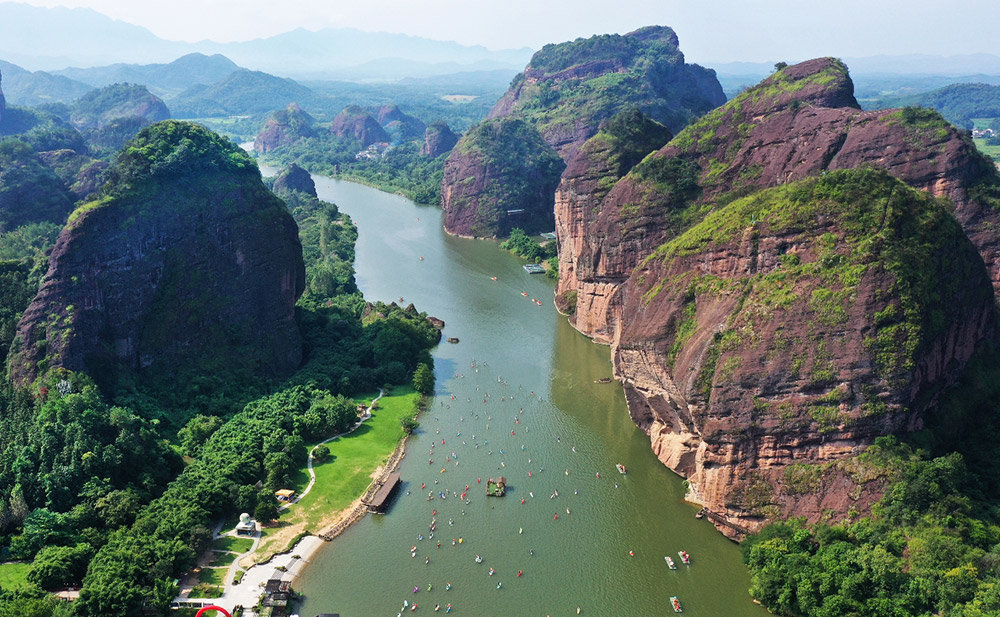
Jiangxi Longhu Mountain: Where Taoism Took Its First Breath
Longhu Mountain is known as the cradle of Taoism, China’s native spiritual philosophy that treasures simplicity, nature, and harmony with the cosmos. Over 1,900 years ago, Zhang Daoling, the First Celestial Master, chose these very mountains as the birthplace of the Tianshi Dao (Way of the Celestial Masters), establishing the earliest Taoist religious order.
Visitors today can explore the Celestial Master Mansion (天师府)—a serene temple complex nestled among pine trees and rock. Here, incense wafts through the halls as monks in long robes chant ancient texts. It’s more than a tourist stop; it’s a living, breathing symbol of Taoist philosophy and cultural heritage.
Taoist temples, mystical legends, and timeworn altars remind every traveler: this isn’t just a destination; it’s the beginning of a spiritual journey.
Solving the Mystery of the Hanging Coffins
High up on the crimson cliffs of Longhu Mountain, something curious awaits—wooden coffins perched on sheer rock faces, tucked into mountain hollows or balanced on wooden beams. These are the enigmatic hanging coffins of the Guyue people, a mysterious group that lived in this region over 2,000 years ago.

No one knows for certain how the coffins were placed so high, or why. Were they honoring the dead by lifting them closer to the heavens? Or was it a way to keep spirits away from earthly distractions?
You can hike to special viewing platforms or take a river raft for the best view of these silent guardians. As the sun hits the cliff walls, the reddish rocks and shadowy coffins cast a surreal glow—a scene straight from a dream, or perhaps an ancient prayer.
The Danxia Wonderland: Red Cliffs and Sculpted Peaks
Longhu Mountain is a textbook example of Danxia landforms—a unique type of red sandstone terrain sculpted by wind and rain into gentle waves, soaring pillars, and curious caves. It’s like a natural art gallery, with rock formations shaped like elephants, dragons, and even reclining Buddhas.
Don’t miss the Elephant Trunk Hill, Immortal’s Bridge, and Fairy Rock, each with its own charming legend.
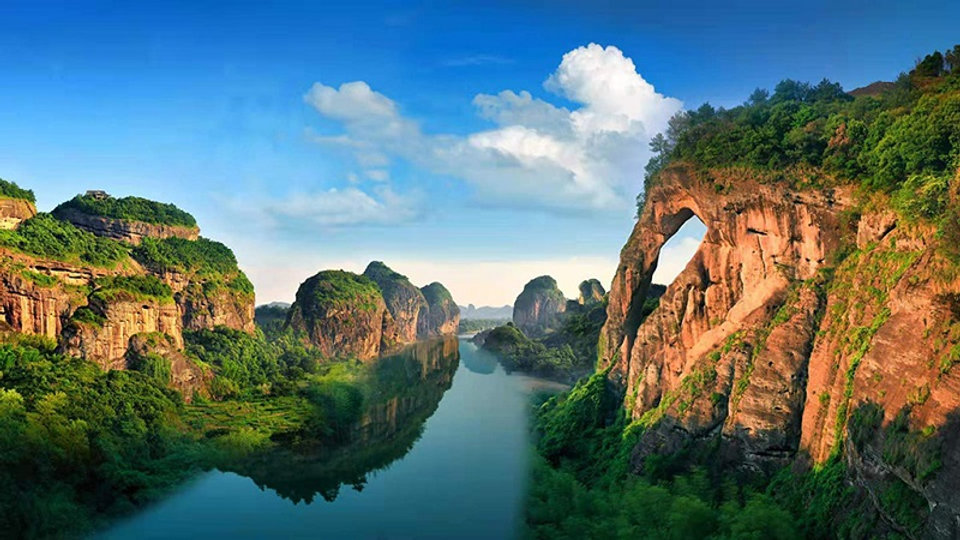
The colorful cliffs and green valleys create a dramatic contrast, especially at dawn when mists curl between the peaks, painting everything in soft blush tones. It’s an Instagrammable moment—but also a deeply peaceful one.
Drifting on the Luxi River: Bamboo Rafting in Style
Among Longhu Mountain’s most delightful experiences is a tranquil float along the Luxi River (泸溪河). Step aboard a traditional bamboo raft and let the world slow down.
With red cliffs towering above and swaying reeds on either side, the raft gently carries you through scenes that feel plucked from a scroll painting. Some routes even include performance segments, where actors in costume re-enact ancient rituals or Guyue legends on the riverbanks.
It’s a relaxing way to enjoy the mountain’s natural beauty—part performance, part meditation, entirely magical.
Echoes of the Guyue: Ancient Cultures, Living Traditions
Longhu Mountain is also home to the remnants of the Guyue culture, one of China’s ancient southern tribes. Though their language is lost, their customs still echo in local festivals, folk music, and handicrafts.
In nearby villages, you might witness reed weaving, ritual dances, or even hear old songs passed down from generation to generation. During special times of year, the region comes alive with Guyue-style performances, giving visitors a rare glimpse into Jiangxi’s indigenous roots.
More Magical Corners of Jiangxi
If Longhu Mountain captures your heart, Jiangxi has plenty more treasures waiting to be explored. Here are some nearby scenic and cultural gems to round out your trip:
Mount Sanqing (三清山)
Another Taoist sacred mountain, this one soars skyward in jagged granite towers. A UNESCO World Heritage Site, Sanqing is beloved for its ethereal sea-of-clouds vistas, narrow cliffside trails, and cable cars that drift between the heavens and earth.
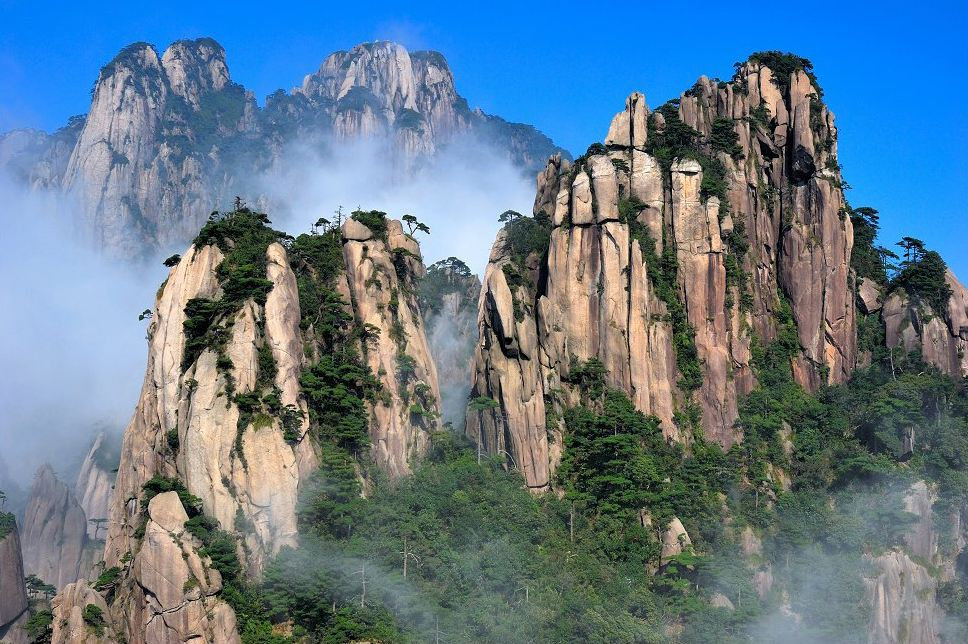
Wuyuan (婺源)
Known as the “most beautiful countryside in China,” Wuyuan is a patchwork of ancient villages, stone bridges, and blooming canola fields. Come in spring for yellow waves of flowers—or in fall, when red maple leaves catch the light.
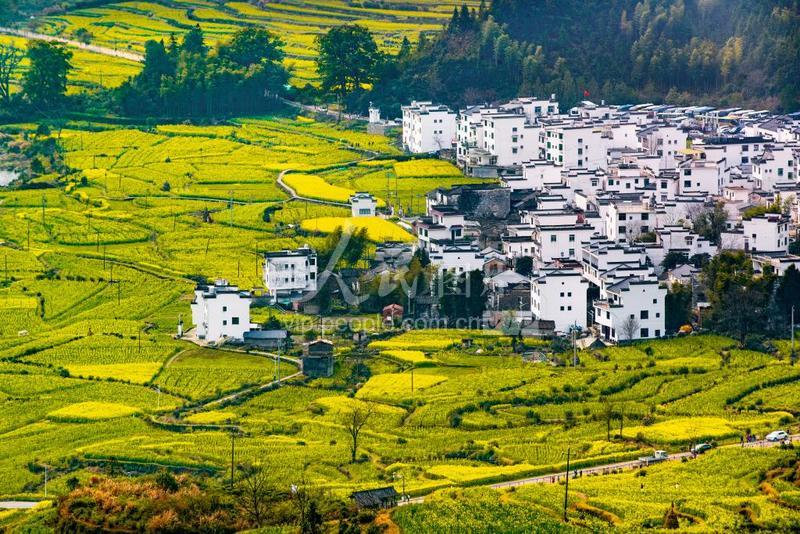
Lushan Mountain (庐山)
This cloud-covered mountain has long inspired poets and painters. It offers hiking, waterfalls, and historical villas once used by famous scholars and leaders. Don’t miss Hanpo Pass for a misty sunrise.

Jingdezhen (景德镇)
Step into the world’s Porcelain Capital, where you can learn about blue-and-white ceramics, visit kilns both ancient and modern, and even try throwing your own clay masterpiece.
Nanchang Tengwang Pavilion (滕王阁)
Rising above the Gan River, this elegant pavilion is one of China’s most famous historical towers, known from Tang Dynasty poetry. Its elegant architecture and river views make it a favorite cultural stop in Jiangxi’s capital.
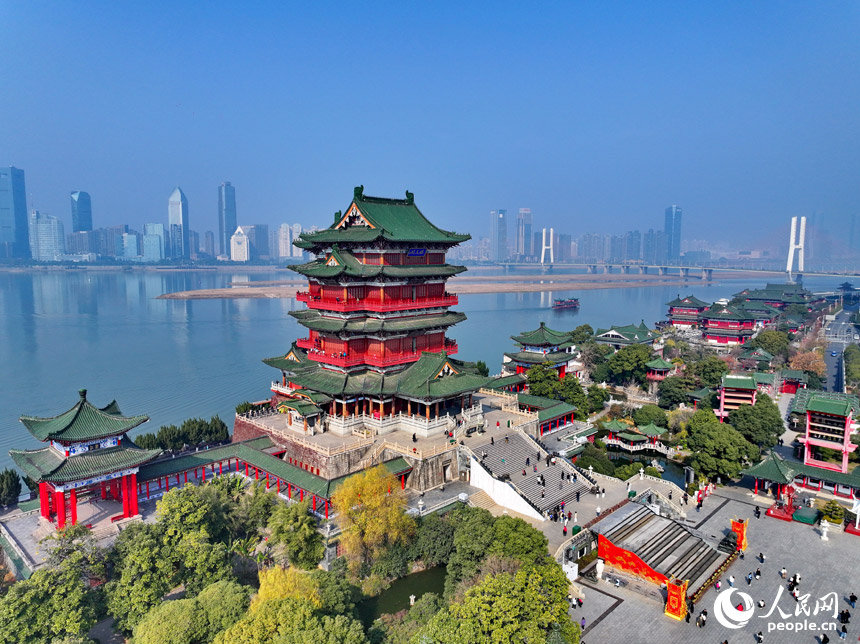
Longhu Mountain is not flashy or crowded. It’s gentle, mysterious, and full of stories told in wind, water, and stone. Whether you come for the Taoist temples, the hanging coffins, the colorful cliffs, or just to drift quietly on a bamboo raft, this magical mountain promises something more than sightseeing—it offers stillness, curiosity, and a deep breath of China’s ancient soul.
Contact us today to craft your dream China adventure!

